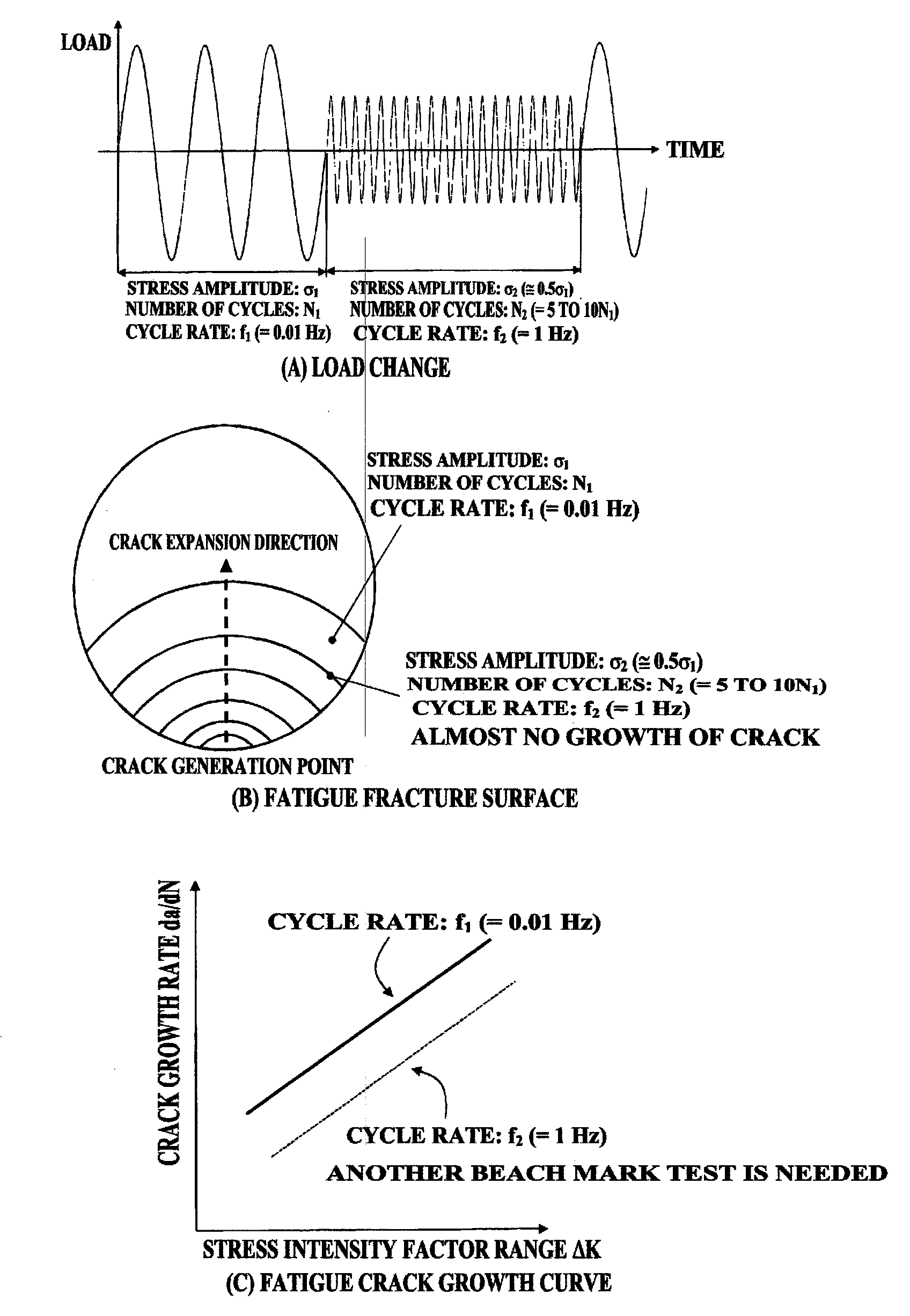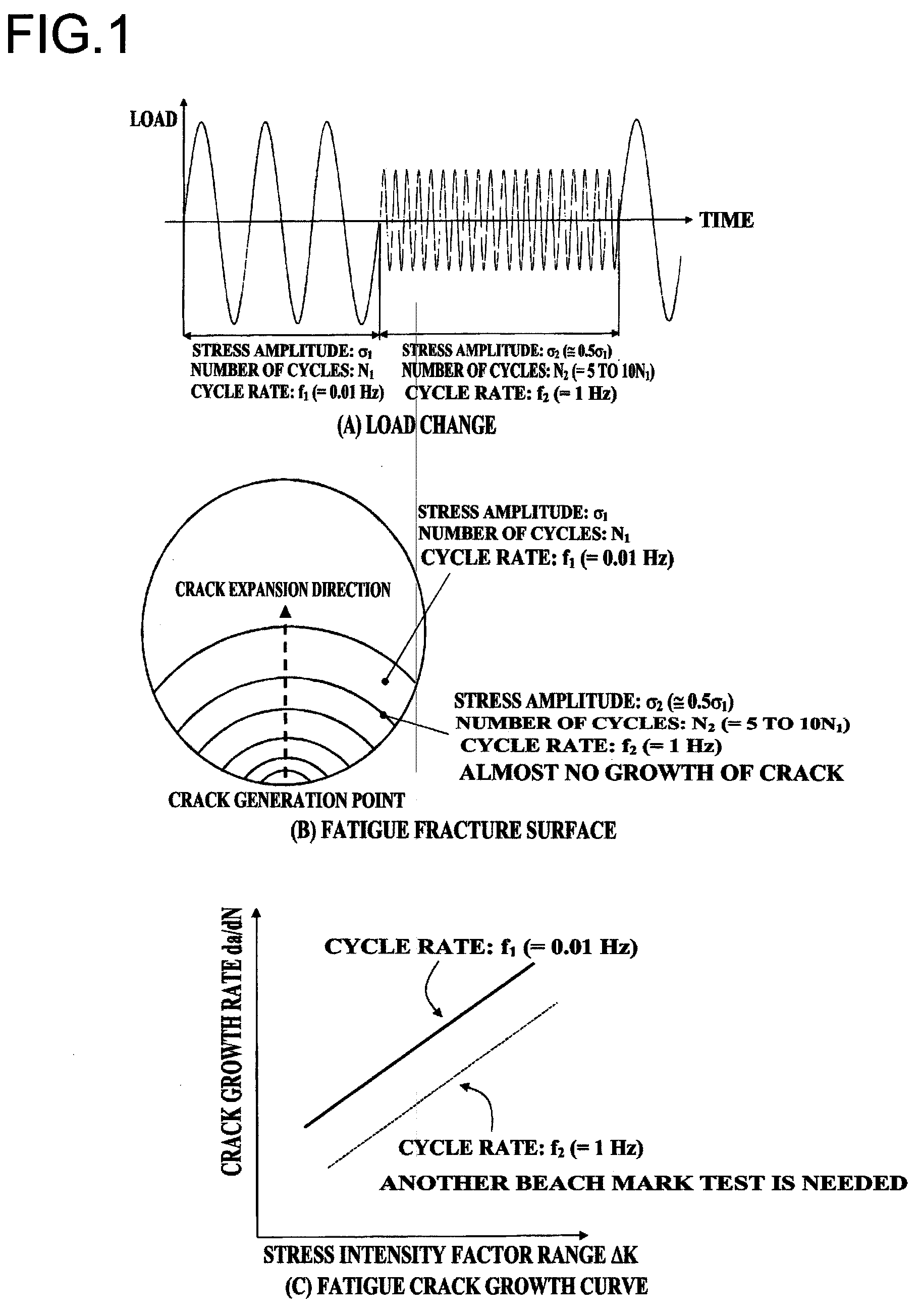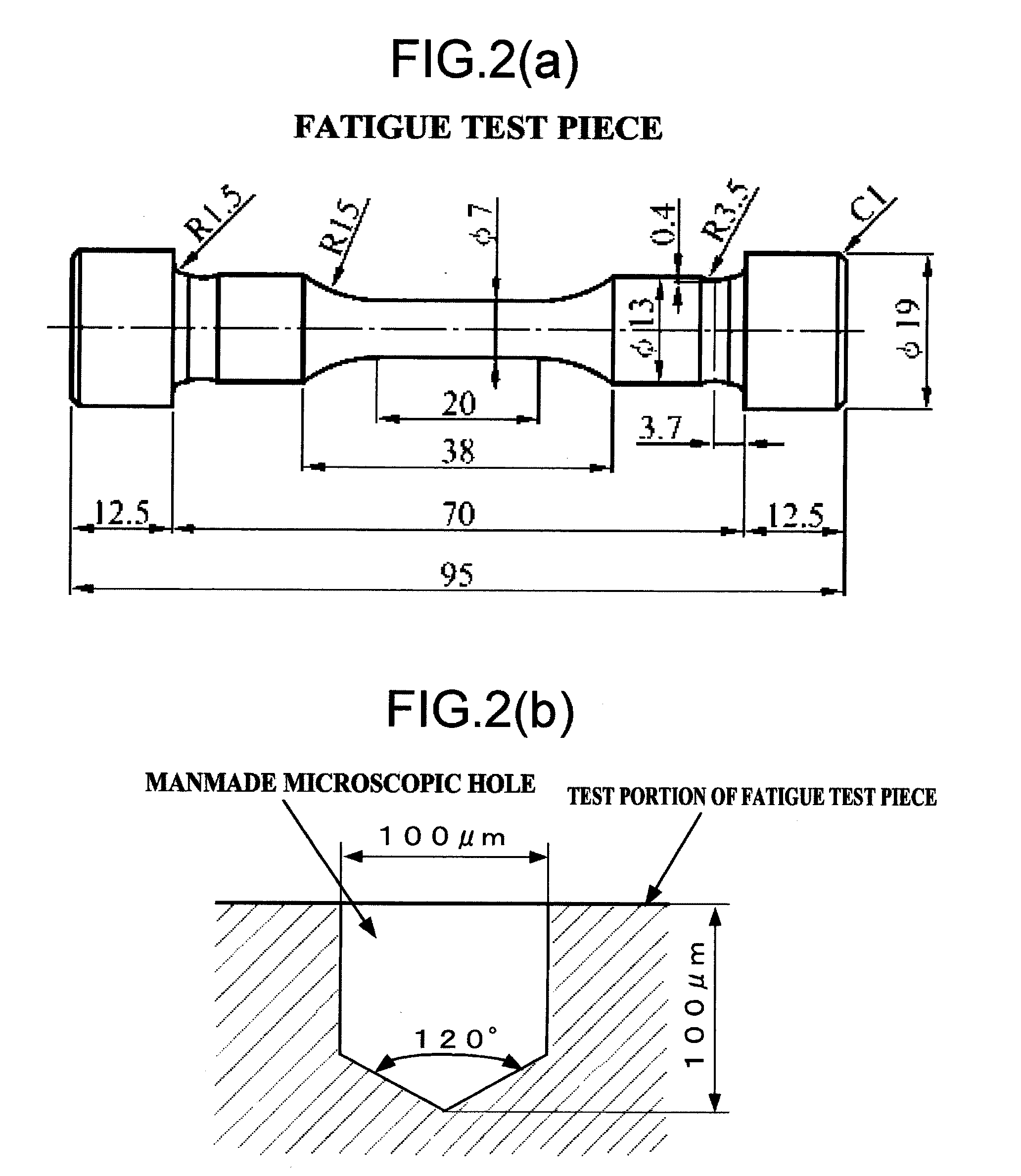Method for testing fatigue in hydrogen gas
a hydrogen gas and fatigue testing technology, applied in the direction of instruments, using mechanical means, and analysing solids using sonic/ultrasonic/infrasonic waves, etc., can solve the problems of crack formation on the surface of the test piece, large quantity of fretting oxide formed, and crack growth under later load conditions cannot be confirmed, so as to achieve greater efficiency in fatigue testing
- Summary
- Abstract
- Description
- Claims
- Application Information
AI Technical Summary
Benefits of technology
Problems solved by technology
Method used
Image
Examples
Embodiment Construction
[0039]1. Effect of Hydrogen Contained in Test Piece
[0040]First, the effect that the hydrogen contained in a test piece has on fatigue crack growth will be described.
[0041]Hydrogen is known to permeate a metal material and lower its static strength and fatigue strength (see the above-mentioned Non-Patent Documents 1 and 2, for example). The inventors of the present invention conducted the following experiment, and confirmed how much effect the hydrogen contained in a test piece has on the growth rate of fatigue cracks.
[0042]Test Piece
[0043]The materials used were austenitic stainless steel SUS 304, SUS 316, and SUSU 316L (A) (hereinafter referred to simply as SUSU 316L). SUS 304, SUS 316, and SUSU 316L that had undergone solid solution treatment were used. FIG. 2(a) shows the shape of the test piece. The surface of the test piece was polished with a #2000 emery cloth, then finished by buffing. Two kinds of test piece were prepared, those that had been hydrogen-charged (see below) and...
PUM
| Property | Measurement | Unit |
|---|---|---|
| pressure | aaaaa | aaaaa |
| pressure | aaaaa | aaaaa |
| crack length | aaaaa | aaaaa |
Abstract
Description
Claims
Application Information
 Login to View More
Login to View More - R&D
- Intellectual Property
- Life Sciences
- Materials
- Tech Scout
- Unparalleled Data Quality
- Higher Quality Content
- 60% Fewer Hallucinations
Browse by: Latest US Patents, China's latest patents, Technical Efficacy Thesaurus, Application Domain, Technology Topic, Popular Technical Reports.
© 2025 PatSnap. All rights reserved.Legal|Privacy policy|Modern Slavery Act Transparency Statement|Sitemap|About US| Contact US: help@patsnap.com



